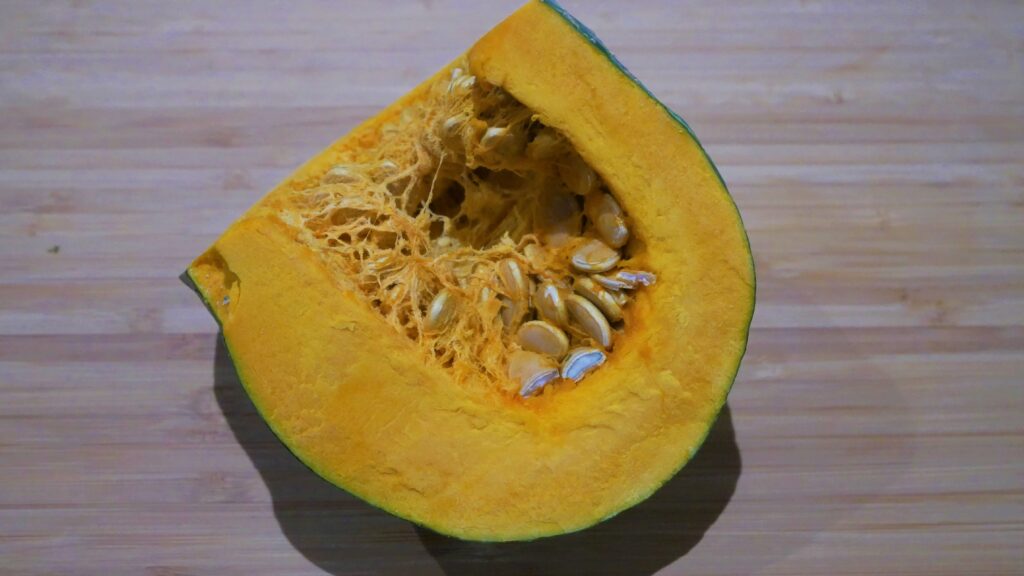Kabocha is a classic Fall food. It is sweet and tastes amazing! We use it as a main dish but also dessert as well.

Let’s talk about one of my favorite vegetables that is super healthy but so many people don’t know about it.
What is the meaning of Kabocha?

Kabocha has three sub-groups: winter squash (kabocha squash), tropical squash (Japanese squash), and summer squash. Winter squash is the one we use for cooking in Japan. They have green skin and are a vivid orange inside and taste so sweet. In the US, the three types are all collectively called Squash. When you translate Kabocha in English, it shows ‘pumpkin’ but actually pumpkin is a different type of summer squash.
One important thing about Kabocha is to be careful when you cut into it because the skin is extremely hard.
Kabocha has two best parts
Kabocha itself is super healthy. You can eat the entire Kabocha and it gives you great health benefits.
1: Kabocha’s skin

Kabocha’s skin is edible. In this kabocha soup recipe I remove the skin, but if you want to include it you absolutely can!
Contains:
- Polyphenol
- Dietary fiber
- β-carotene
- Vitamin C
- Potassium
This helps boost your immune system, has anti-aging properties, and protects your skin.
2: Kabocha’s seeds

This is the healthiest part of Kabocha.
Contains:
- Iron
- Zinc
- Potassium
- Dietary fiber
- Linoleic acid
Kabocha’s seeds are used as an herbal medicine. They are also considered a super-food.
They help prevent arteriosclerosis, and decrease bad cholesterol.
Kabocha’s health benefits
As I mentioned earlier, Kabocha itself is super healthy.
All of the health benefits
- Weight loss
- Improves anemia
- Treats dry skin
- Has anti-aging properties
- Treats exhaustion
- Cures constipation
- Prevents arteriosclerosis
- Improves your immune system
- Lowers bad cholesterol
Where Kabocha is sold?
Kabocha is probably difficult to find at local grocery stores. I have seen it a couple times at the big local grocery stores but it is rare. Usually if you go to an Asian grocery store, they have it in the produce section. Kabocha is usually sold pre-cut in half or smaller pieces.
If you don’t have access to an Asian grocery store, Japanese grocery stores might have online delivery service.
*Kabocha is usually in season from October through December
The substitute if you can’t find Kabocha
I have used butternut squash as a substitute instead of Kabocha, but the taste is fairly different. Kabocha is much sweeter while other types of squash aren’t very sweet at all. So in my opinion there aren’t any perfect substitutes.
But, if you like fresh and not so sweet ‘Kabocha soup’, then butternut squash or acorn squash are the best substitutes.
[…] kabocha […]